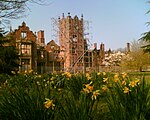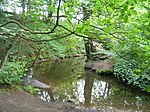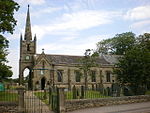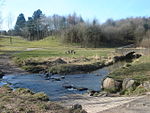Bank Hall Gardens

Bank Hall Gardens comprise 18 acres (73,000 m2) of curtilage at Bank Hall, in Bretherton, Lancashire, England. The gardens contain specimen trees including a yew thought to be the oldest in Lancashire. Many architectural features, statues, low garden walls, conservatory and greenhouses have gone but there are plans to recreate them. The Bank Hall Action Group has tended the grounds since its formation in 1995. The group has planted specimen trees and identified the flora and fauna. The group opened the gardens to the public in 1999 after building a security fence, erecting scaffolding to secure the building and clearing the overgrowth. New varieties of snowdrops, some of which are unique to the gardens were uncovered. After a visit from the Snowdrop Society in 2007 the garden has become nationally known for snowdrop carpets during February.The gardens open for special events through the year.
Excerpt from the Wikipedia article Bank Hall Gardens (License: CC BY-SA 3.0, Authors, Images).Bank Hall Gardens
Liverpool Road,
Geographical coordinates (GPS) Address Website Nearby Places Show on map
Geographical coordinates (GPS)
| Latitude | Longitude |
|---|---|
| N 53.67552 ° | E -2.8152 ° |
Address
Bank Hall
Liverpool Road
PR26 9AX , Bretherton
England, United Kingdom
Open on Google Maps








